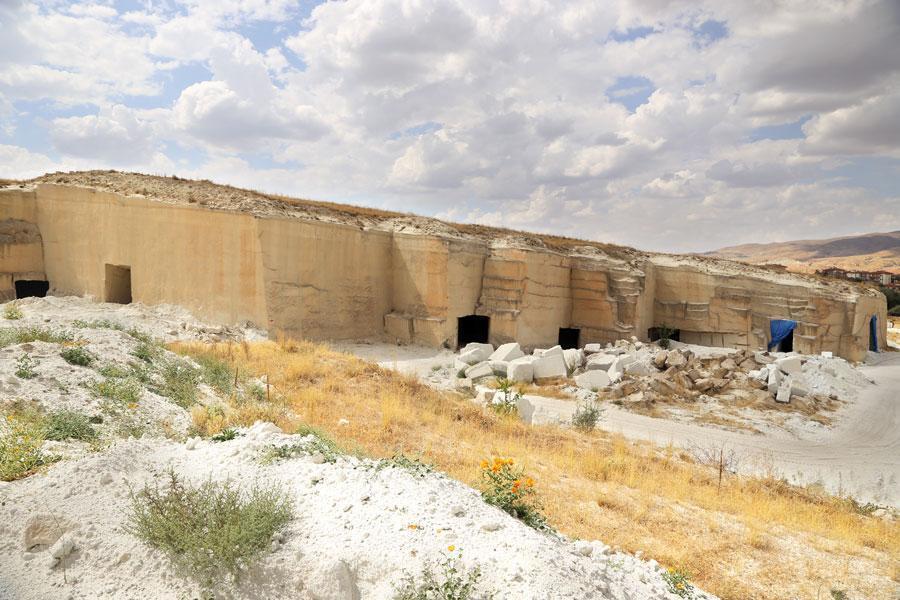
Located in Turkey’s central Nevşehir province, Cappadocia, a region known to attract tourists with hot-air balloon rides over cone-shaped rock formations, will now host the first ever natural underground museum.
The Cappadocia Museum near Avanos is being built on tuff rock ground created thousands of years ago by the lava that spewed from Mount Argaeus (Erciyes), Mount Hasan and Mount Güllü.
Construction of the museum started in January. It will shed light on Anatolian history by presenting ethnographic and thematic artifacts.
The underground museum area has a natural habitat that allows endemic plants to grow in a 50,000-square meter outdoor space and a 7,000-square meter indoor space.
The museum will also boast a multi-purpose conference hall, documentary-watching rooms, playgrounds for children, and a research center.
The museum will be 15 minutes away from the most popular tourist sites such as the Göreme open-air museum, the Zelve Archeological Site and Üçhisar Castle.
Speaking to the state-run Anadolu Agency, the Nevşehir Museum Director and Turkish representative of the European Museum of the Year Award organization, Murat Gülyaz, said the museum would “add value” to Cappadocia.
“The museum is set to open in July 2018. As it is a 100 percent natural structure underground, the Cappadocia Museum will be among the most important museums in the world because there is no structure similar to it yet,” said Gülyaz.
Gülyaz said the museum would be home to fossils from millions of years ago as well as archaeological and thematic sections and that it would be cool in the summer and hot in the winter months.
“It will be an environmental friendly eco-museum. Endemic plants will grow on its roof and no iron or cement was used in its construction. It is completely original and the first of its kind in the world. Its inner temperature will be 21 centigrade both in the summer and winter without energy consumption. The museum will have a section called ‘residents of graves.’ Burial rituals from the ancient ages to the Ottoman era will be displayed with archaeological findings and thematic presentations. There will also be 12 million year-old fossils as well as sections special to faith and Cappadocia,” he said.
Gülyaz said priority at the museum would be children. “We will make them love nature and archaeology,” he said.